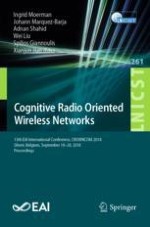2019 | OriginalPaper | Buchkapitel
Interference Rejection Combining for Black-Space Cognitive Radio Communications
verfasst von : Sudharsan Srinivasan, Markku Renfors
Erschienen in: Cognitive Radio Oriented Wireless Networks
Aktivieren Sie unsere intelligente Suche, um passende Fachinhalte oder Patente zu finden.
Wählen Sie Textabschnitte aus um mit Künstlicher Intelligenz passenden Patente zu finden. powered by
Markieren Sie Textabschnitte, um KI-gestützt weitere passende Inhalte zu finden. powered by
